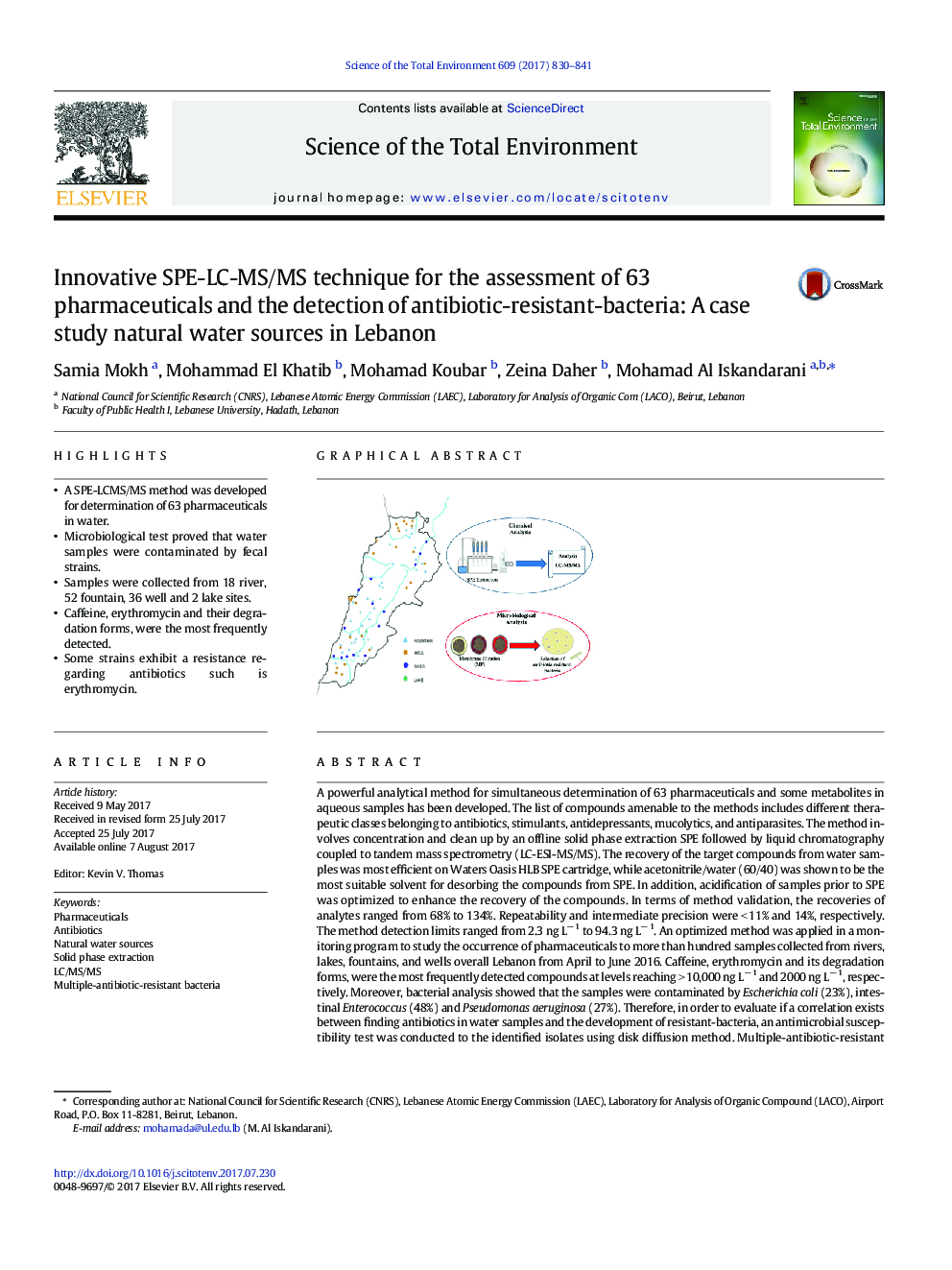| Article ID | Journal | Published Year | Pages | File Type |
|---|---|---|---|---|
| 5750810 | Science of The Total Environment | 2017 | 12 Pages |
â¢A SPE-LCMS/MS method was developed for determination of 63 pharmaceuticals in water.â¢Microbiological test proved that water samples were contaminated by fecal strains.â¢Samples were collected from 18 river, 52 fountain, 36 well and 2 lake sites.â¢Caffeine, erythromycin and their degradation forms, were the most frequently detected.â¢Some strains exhibit a resistance regarding antibiotics such is erythromycin.
A powerful analytical method for simultaneous determination of 63 pharmaceuticals and some metabolites in aqueous samples has been developed. The list of compounds amenable to the methods includes different therapeutic classes belonging to antibiotics, stimulants, antidepressants, mucolytics, and antiparasites. The method involves concentration and clean up by an offline solid phase extraction SPE followed by liquid chromatography coupled to tandem mass spectrometry (LC-ESI-MS/MS). The recovery of the target compounds from water samples was most efficient on Waters Oasis HLB SPE cartridge, while acetonitrile/water (60/40) was shown to be the most suitable solvent for desorbing the compounds from SPE. In addition, acidification of samples prior to SPE was optimized to enhance the recovery of the compounds. In terms of method validation, the recoveries of analytes ranged from 68% to 134%. Repeatability and intermediate precision were < 11% and 14%, respectively. The method detection limits ranged from 2.3 ng Lâ 1 to 94.3 ng Lâ 1. An optimized method was applied in a monitoring program to study the occurrence of pharmaceuticals to more than hundred samples collected from rivers, lakes, fountains, and wells overall Lebanon from April to June 2016. Caffeine, erythromycin and its degradation forms, were the most frequently detected compounds at levels reaching > 10,000 ng Lâ 1 and 2000 ng Lâ 1, respectively. Moreover, bacterial analysis showed that the samples were contaminated by Escherichia coli (23%), intestinal Enterococcus (48%) and Pseudomonas aeruginosa (27%). Therefore, in order to evaluate if a correlation exists between finding antibiotics in water samples and the development of resistant-bacteria, an antimicrobial susceptibility test was conducted to the identified isolates using disk diffusion method. Multiple-antibiotic-resistant strains in both intestinal Enterococcus and E. coli were evident in many water samples, while P. aeruginosa was resistant to only one studied antibiotic.
Graphical abstractDownload high-res image (142KB)Download full-size image
